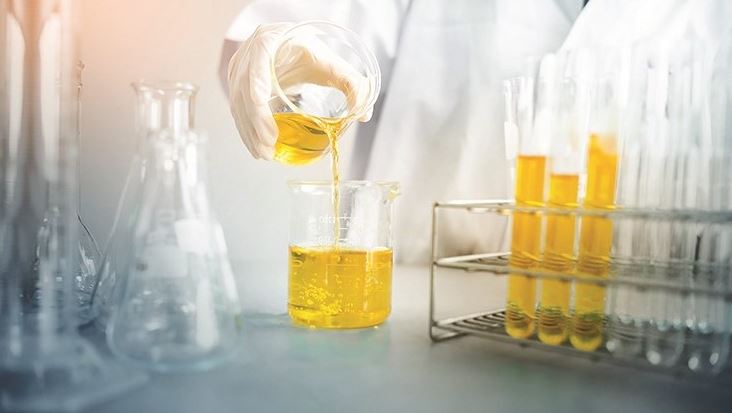As you probably already know, cannabis is a very versatile plant, and lately, it’s been associated with various health benefits including relief from chronic pain, anxiety, depression, and even some cancer treatment symptoms. These benefits are being credited to the 100+ cannabinoids – chemical compounds existing naturally in the cannabis plant.
The most known and well-understood cannabinoids are THC and CBD. While THC is psychoactive, CBD has no mind-altering effects and it’s actually thought to counteract the high effect of THC.
To benefit from cannabis plants, these cannabinoids need to be extracted and processed into various products such as oils, edibles, tinctures, etc.
There are several ways of extracting cannabis oil from the plant. In this post, we will highlight the most common extraction techniques, how they work as well as their pros and cons.
Ethanol Extraction Method

Ethanol extraction is considered as the best way to create cannabinoids that are not only pure but also highly concentrated for human consumption.
The process involves using ethanol (alcohol) as the extraction solvent. The FDA has classified ethanol as a Class 3 solvent with low toxic risks. The method is known to leave very little to no residual solvent behind and that’s why it’s preferred by many manufacturers.
The Process
Ethanol extraction can be carried out either under cold or warm temperatures. Using the Soxhlet technique, for instance, manufacturers boil, condense, and cool the solvent.
The solvent is then used to soak cannabis and left to sit for up to an hour. During this time, ethanol strips off cannabinoids from the cannabis plant. The extract is then evaporated to remove the residue. This leaves behind pure cannabis oil. Post-processing may be required to refine and purify the extract even further.
Although extraction is possible under cold and warm conditions, most manufacturers use room temperatures as this allows for the extraction of specific cannabinoid acids such as CBDA and THCA, used to make shatter and other crystals.
Also, cool temperatures help minimize the risk of extracting unwanted plant elements such as waxes and pigments. Remember, ethanol is considered a polar solvent, meaning apart from dissolving the cannabinoids, it will also dissolve other water-soluble elements such as chlorophyll.
As compared to CO2, ethanol extraction is less expensive to set up. It also allows the use of automated and regulated equipment by the use of a digital interface. It’s also safer as compared to other solvents such as butane.
CO2 Extraction Method
The other popular cannabis oil extraction method is Supercritical CO2 Extraction. The method involves the use of pressurized CO2 gas to strip cannabinoids from the cannabis plant.
During the process, CO2 is put under high pressure and low temperatures. The high pressure transforms the gas into a liquid, which is then passed through the plant material. The process results in a highly concentrated and pure oil extract.
The main shortcoming of CO2 extraction is that it requires very expensive equipment and highly skilled operators. This means that not many startups can afford it. Even the ones that can afford it end up selling the resulting extract at very high prices.
Hydrocarbon Extraction
This method is not as popular as the other two. It involves the use of hydrocarbon solvents such as pentane, butane, and hexane to extract the oil. These solvents are preferred because of their low boiling points.
Although cheap and easy to execute, this method presents an array of issues; to start with, the method results in low-quality cannabis oil, with very low cannabinoid concentration. There’s also the issue of toxic residue which may interfere with the immune system. Over time, this method has been outdated and it’s rarely used for commercial cannabis oil.
Additional Cannabis Extract Processing
Regardless of the extraction method, the following post-extraction processes may be vital:
Decarboxylation
Naturally, cannabinoids exist in an acidic form, eg, THCA (Tetrahydrocannabinolic acid), CBDA (Cannabidiolic acid), and CBGA (Cannabigerolic acid)
In order to produce the desired molecule/compound, these acidic cannabinoids must be activated. This means activating a compound such as THCA into THC.
When using a low-temperature process, eg, CO2, these compounds may revert back to the acidic form. The acid molecule must, therefore, be removed through decarboxylation. This simply means heating the extract to remove the acid molecule.
Winterization
Besides the cannabinoids, high pressure/temperature may extract unwanted elements such as plant matter, fatty acids, and chlorophyll. Winterization involves mixing the cannabis extract in 200 proof alcohol and freezing it overnight.
This results in a cloudy mixture that can be taken through a filtration process. Since alcohol has a lower boiling point than the cannabis oil, it’s easily eliminated via evaporation.
Wrapping Up
Although there are many ways of extracting cannabis oil, ethanol extraction is the preferred method for most manufacturers. Apart from being easily scalable, it requires inexpensive equipment and is less power-intensive as compared to CO2. Although there’s a risk of chlorophyll extraction, this can be avoided by the use of low temperatures.
On the other hand, CO2 has minimal risk of residue solvents. Automation is also easy and available. The process is also selective and tunable for different molecular weights. However, it’s costly to set up and requires specialized skills, especially for manually operated systems.
All in all, the two methods have their pros and cons, and you should consider your personal needs, skills, and budget before deciding on the best extraction technique for your company.



